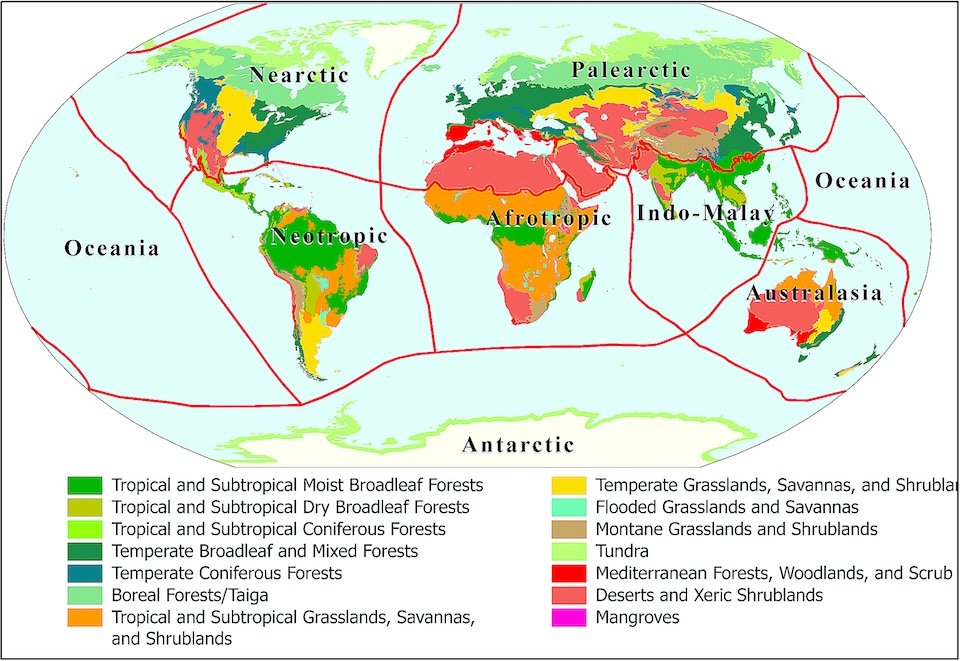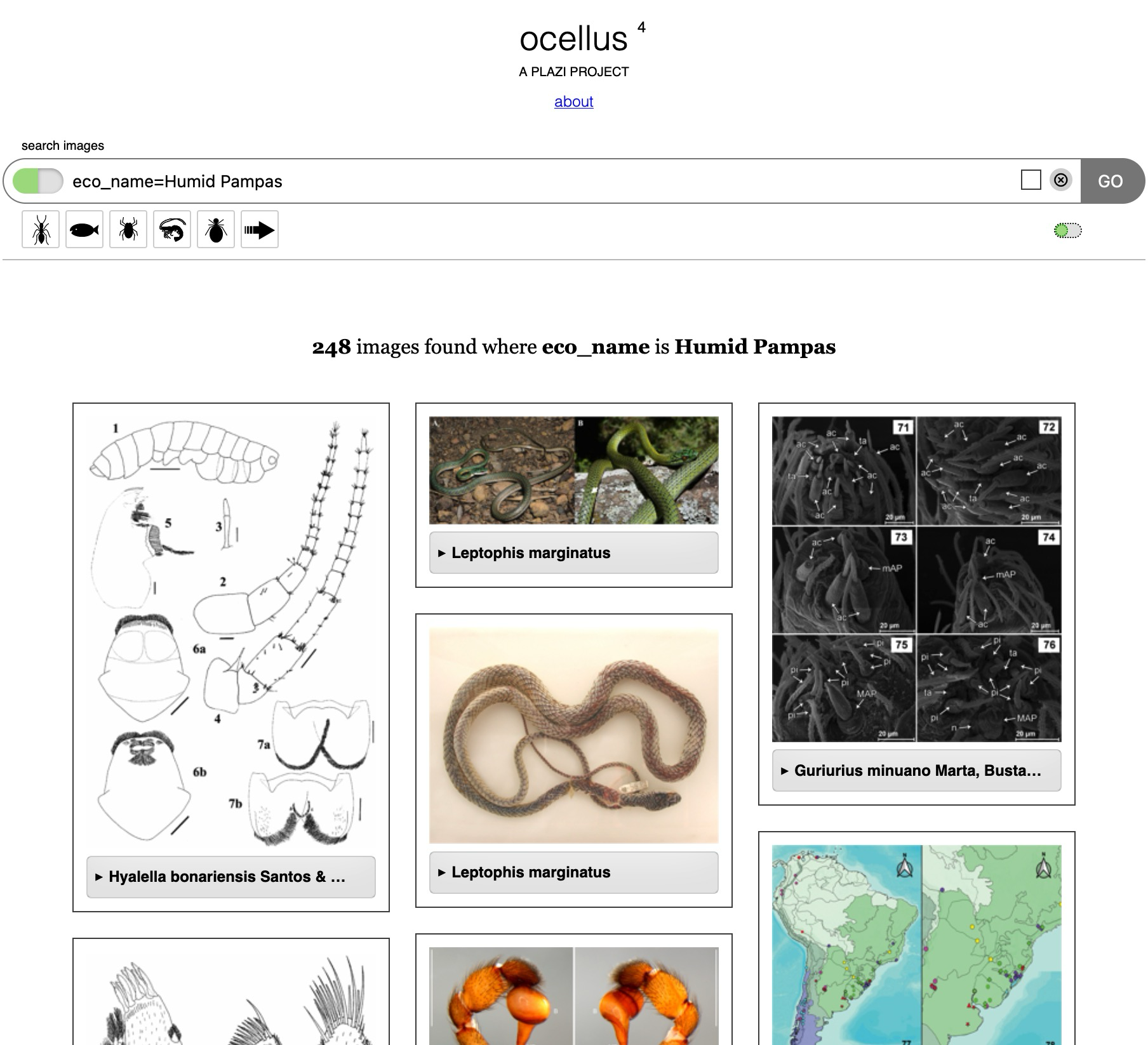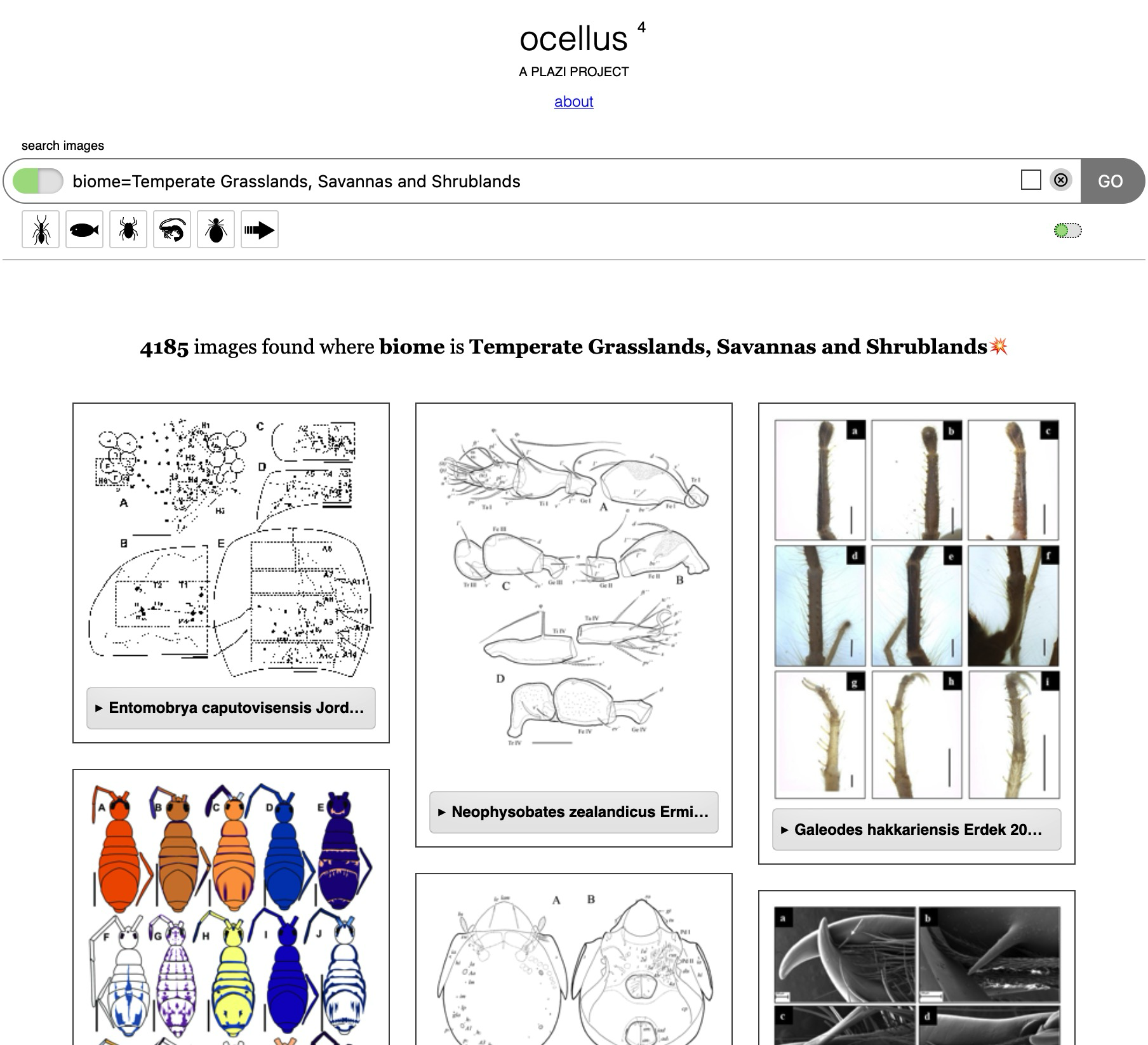Searching by ecoregions and biomes
Many of the material citations extracted by Plazi contain geo-coordinates which opens up the way to searching for them by various geographic features along with the non-geographic attributes such as taxa. It is now possible to search for images that are a part of the treatments by ecoregions, biomes and realms.

Ecoregions, biomes and realms from Olson, et. al.
The World Wildlife Fund (WWF) defines terrestrial ecoregions as follows:
Terrestrial Ecoregions of the World (TEOW) is a biogeographic regionalization of the Earth’s terrestrial biodiversity. Our biogeographic units are ecoregions, which are defined as relatively large units of land or water containing a distinct assemblage of natural communities sharing a large majority of species, dynamics, and environmental conditions. … Ecoregions represent the original distribution of distinct assemblages of species and communities.
– David M. Olson, et. al. 2011. Terrestrial Ecoregions of the World: A New Map of Life on Earth: A new global map of terrestrial ecoregions provides an innovative tool for conserving biodiversity, BioScience, Volume 51, Issue 11, November 2001, Pages 933–938, https://doi.org/10.1641/0006-3568(2001)051[0933:TEOTWA]2.0.CO;2
It is now possible to search for images on Ocellus by ecoregions and biomes. For example, look at the following queries:

images from treatments in the ecoregion called 'Humid Pampas'

images from treatments in the biome 'Temperate Grasslands, Savannas and Shrublands'
Synonyms of biomes are also supported. For example, ‘Temperate Grasslands, Savannas and Shrublands’ are known as ‘pampas’ in South America, and searching for ‘pampas’ gives the same result as above.
All this is possible because much of our materialCitations data contains geolocation extracted from treaments plus, a new ecoregions database download in ESRI Shapefile format that includes information on biomes and realms. The data is from RESOLVE and described in the updated Eric Dinerstein, et al. 2017. An Ecoregion-Based Approach to Protecting Half the Terrestrial Realm, BioScience, Volume 67, Issue 6, June 2017, Pages 534–545, https://doi.org/10.1093/biosci/bix014. As shown in the figure above, the data contains 847 terrestrial ecoregions divided into 14 biomes and eight realms.
The ecoregions data has been prepared for and included in Zenodeo API that powers Ocellus. Below are a couple of examples of queries to Zenodeo that return the data as JSON.
$ curl https://test.zenodeo.org/v3/ecoregions
{
"item": {
…
"result": {
"count": 847,
"records": [
{
"id": 1,
"eco_name": "Adelie Land tundra",
"biome_name": "Tundra"
},
{
"id": 2,
"eco_name": "Admiralty Islands lowland rain forests",
"biome_name": "Tropical & Subtropical Moist Broadleaf Forests"
},
…
]
},
…
}
$ curl https://test.zenodeo.org/v3/biomes
{
"item": {
…
"result": {
"count": 15,
"records": [
{
"id": 1,
"biome_name": "Tundra",
"synonym": "Tundra"
},
{
"id": 2,
"biome_name": "Tropical and Subtropical Moist Broadleaf Forests",
"synonym": "Tropical and Subtropical Moist Broadleaf Forests"
},
…
]
},
…
}
There is still much to be done. For starters, we need to add more synonyms to the biomes. Second, the synonyms need to identify biomes geographically. For example, right now ‘pampas’ is a synonym for all of ‘Temperate Grasslands, Savannas and Shrublands’, no matter where in the world they may be. But a user in S America might expect only the regions in S America when searching for ‘pampas’. For this, a new, more detailed biomes map has to be built with synonyms as an attribute. Third, selection of ecoregions or biomes has to be easier than it is now. And finally, the queries have to be faster.
